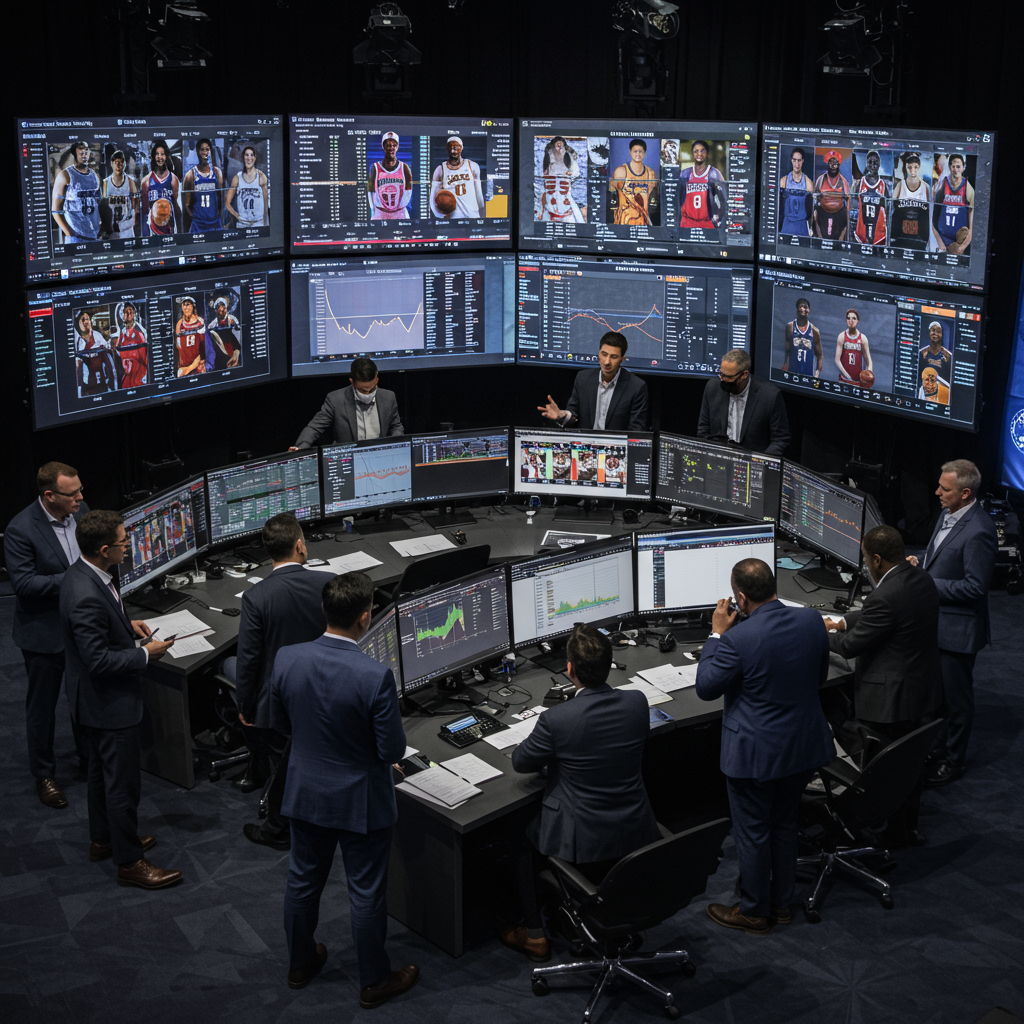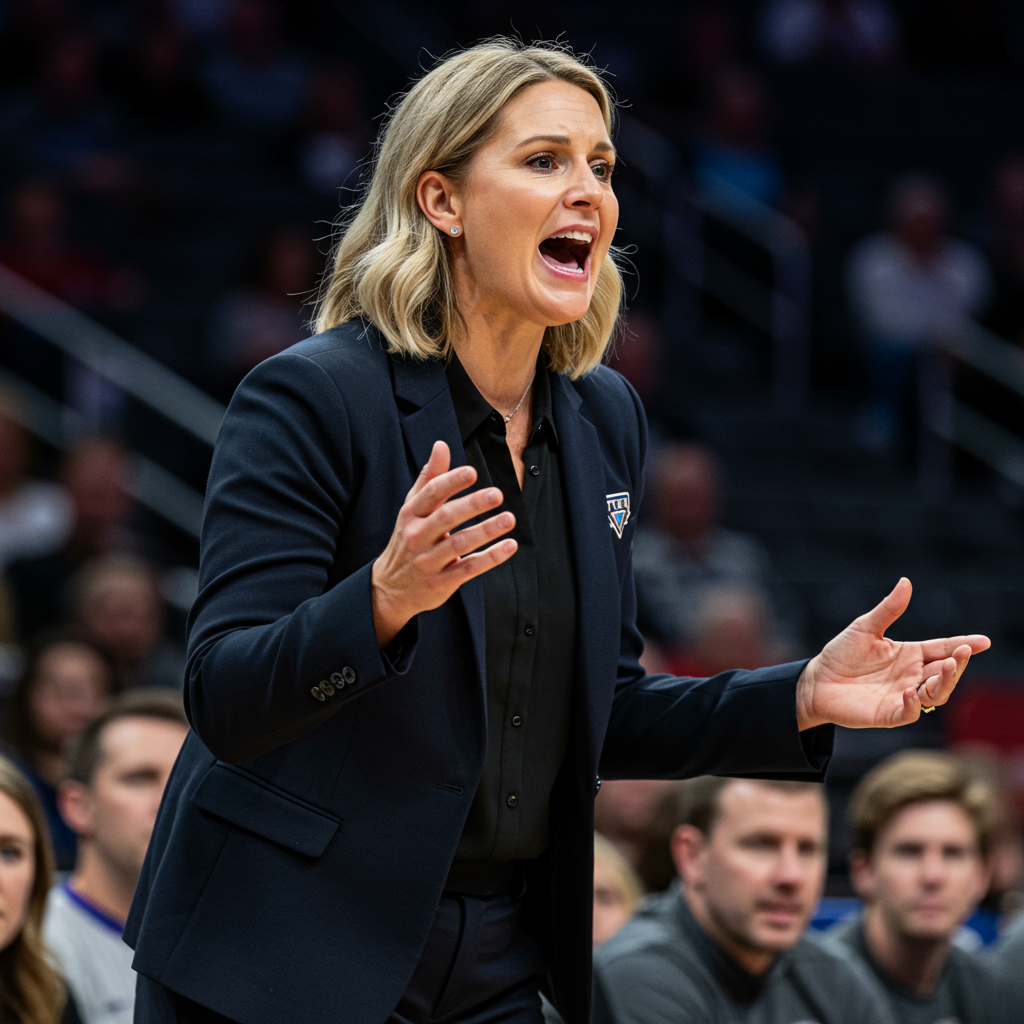The 2025 NBA Draft wrapped up with Day 2, featuring the crucial second round where teams hunt for hidden gems, role players, and future assets. With picks 31 through 59 (though the Knicks forfeited pick 56, leaving 29 total selections), teams made significant moves, including notable trades and strategic picks aimed at filling roster needs and building for the future.
Analyzing the value and fit of these second-round selections offers insights into team strategies and potential roster impacts. One of the most discussed moves involved the Los Angeles Lakers, who aggressively targeted a specific player.
Lakers Make Aggressive Trade Up for Adou Thiero
Highlighting the proactive nature of the second round, the Los Angeles Lakers made a significant splash by trading up multiple times to secure their desired target, Adou Thiero, with the No. 36 pick. The Lakers initially held pick 55, traded it with cash to Chicago for pick 45, then traded pick 45 and more cash to Minnesota for pick 36. This series of moves demonstrated a clear conviction in Thiero.
Thiero, a forward, was considered a “perfect target” for the Lakers due to his powerful frame and explosive first step, making him a potent slasher. His high rate of dunks and free-throw attempts reflects his ability to attack the paint. While his shooting remains an area for development, his length and defensive versatility are seen as qualities that could make him a valuable contributor, particularly for a team aiming to contend. Thiero’s selection earned an A grade.
Other High-Grade Selections and Potential Steals
Several teams earned high marks for their second-round finds, often players who analysts believed could have gone earlier:
Phoenix Suns started the round strong with the No. 31 pick, selecting forward Rasheer Fleming (A-). Fleming is seen as a high-energy hustle player, providing spot-up shooting, rebounding, and shot-blocking. Despite needing to improve ball-handling, his fit as a simple floor-spacer appears ideal for Phoenix. The Suns were active traders early on, first acquiring pick 36 from Brooklyn for two future seconds, trading 31 to Minnesota (getting 36 back plus future seconds), and trading 52 and 59 to Golden State to move up to 41. With the No. 41 pick, they added guard Koby Brea (A), a specialist shooter who has consistently hit over 43% from three. While defense is a question, his shooting alone could earn him rotation minutes.
The Charlotte Hornets, fresh off trading Mark Williams and adding pieces in the first round, addressed needs effectively in the second. At No. 33, they picked guard Sion James (B), a versatile defender whose spot-up shooting improved significantly. His hustle and ball movement add depth. At No. 34, they landed center Ryan Kalkbrenner (A), a traditional, sought-after big man who dominates the paint with shot-blocking and finishing. Despite being a “super senior,” his surprising development in passing and shooting hints at more offensive upside.
The Detroit Pistons desperately needed shooting and seemingly found their answer at No. 37 with guard Chaz Lanier (A+). Praised as a “perfect pick,” Lanier is a knockdown shooter with shot-making creativity, potentially filling a role similar to Malik Beasley. His shooting addresses a core team weakness directly.
The Toronto Raptors, building a defensive identity, selected guard Alijah Martin (A+) at No. 39. Martin is a hyper-athletic, high-energy player who impacts the game with toughness, rebounding, and defensive grit, fitting well with their first-round pick Collin Murray-Boyles.
The New Orleans Pelicans, who had a polarizing first round according to some analyses, added an NBA-ready wing defender at No. 40 with Micah Peavy (A-). Peavy is switchable with good instincts and passing feel. If his improved jumper holds, he projects as a long-term rotation piece, pairing well with defenders like Herb Jones.
The Sacramento Kings found a potential “steal” at No. 42 in forward/center Maxime Raynaud (A+). Ranked much higher on some draft boards, Raynaud is a stretch big who developed slashing, handling, and passing skills in college. Defensive improvement is key for his NBA role.
The Milwaukee Bucks also landed a potential first-round talent who fell, selecting forward Bogoljub Marković (A+) at No. 47. Seen as a high-upside stretch forward with passing and post-scoring potential, he offers versatility regardless of Giannis Antetokounmpo’s future, though he needs significant physical development, making him a candidate for a draft-and-stash.
The Memphis Grizzlies picked guard Javon Small (A-) at No. 48. An undersized but gritty and athletic guard, Small is a knockdown catch-and-shoot threat and solid lead guard, offering backcourt support.
Analysis of Remaining Second-Round Picks (32-52)
Beyond the top-graded picks, other teams made selections aimed at specific needs or taking developmental swings:
Orlando Magic acquired the No. 32 pick from Boston in a trade and selected forward Noah Penda (C+). Penda is noted for his veteran mentality, connective playmaking, and switchable defense, with his jumper needing improvement.
The Philadelphia 76ers drafted forward/center Johni Broome (B+) at No. 35. He brings an interior finishing game, passing feel, and defensive intensity, potentially serving as Joel Embiid’s backup, though his jumper hasn’t progressed significantly.
The Indiana Pacers added guard Kam Jones (B) at No. 38, seeking shot creation support. Jones is a crafty combo guard with advanced creation skills, though his average athleticism and streaky shooting temper expectations.
The Washington Wizards picked guard Jamir Watkins (B+) at No. 43, fitting their apparent strategy of drafting versatile offensive pieces. Watkins can handle the ball, slash, and switch defensively.
The Oklahoma City Thunder selected guard/forward Brooks Barnhizer (B-) at No. 44. He’s a defensive hustler and good ball mover who fits OKC’s style, with hopes that shooting development can unlock his potential.
The Minnesota Timberwolves added center Rocco Zikarsky (B) at No. 45, a traditional big focused on finishing and rim protection. His selection alongside a first-round center sparked speculation about Minnesota’s frontcourt plans.
The Boston Celtics picked center Amari Williams (B) at No. 46. A large center with smart passing and rim defense, he fits Boston’s offensive system but needs better perimeter mobility.
The Cleveland Cavaliers drafted guard Tyrese Proctor (B) at No. 49. A tall combo guard with good passing vision who improved his jumper and defense, he could be a valuable short-term piece.
The LA Clippers, after trading up with the Knicks (acquiring No. 50 for No. 51), selected guard/forward Kobe Sanders (B) at No. 50. An oversized wing initiator with excellent feel and actual shooting ability, despite limited athleticism.
The New York Knicks, receiving assets including pick 51 from the Clippers trade, used the No. 51 pick on forward Mohamed Diawara (C+). With impressive physical tools but limited overseas production, this pick appears to be a speculative swing on physical upside.
- The Golden State Warriors, after trading down with the Suns, used one of the acquired picks, No. 52, on forward Alex Toohey (B). A “jack-of-all-trades” forward who defends and passes well, he fits Golden State’s motion offense, but needs more scoring consistency.
- sports.yahoo.com
- www.nytimes.com
- sports.yahoo.com
- sports.yahoo.com
- www.nba.com
The second round of the 2025 NBA Draft saw teams strategically address needs, target specific players like the Lakers’ pursuit of Adou Thiero, and find potential diamonds in the rough, setting the stage for player development and roster shaping in the seasons to come.



